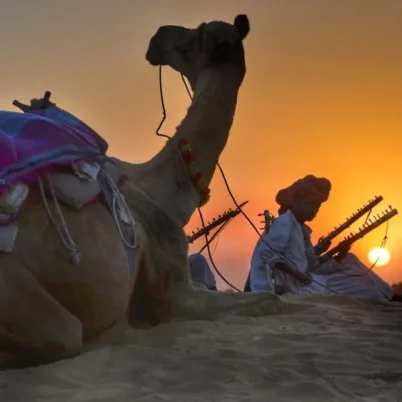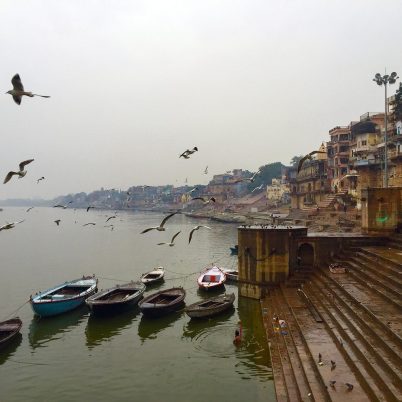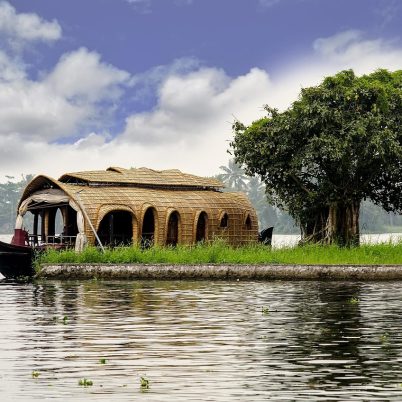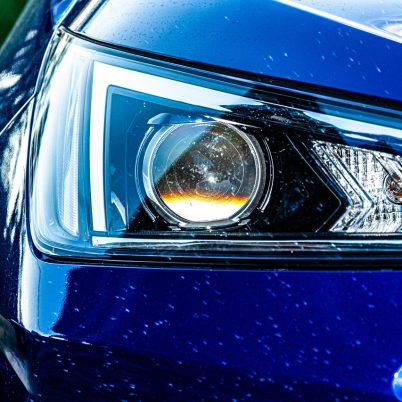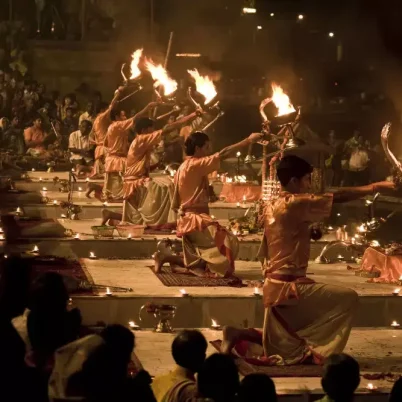
With a large population of the majestic big cat, you will find some of the best national parks in India to see tigers. When you think of India, you think of temples, the Taj Mahal, great food, cows, and tigers. Around half the world’s wild tiger population can be found in India. It is no wonder then that the tiger is the national animal of India.
For many of our guests at India Someday, a tiger safari is at the top of their to-do list while traveling to India. Plus, with the increasing population of tigers in the country, the chances of spotting a Bengal tiger are quite good. So, which national parks should you visit to increase your chances of seeing a tiger in India? In this blog, we talk about five national parks with a good tiger population in India and things to consider before visiting a national park.
Tigers in India: Things to consider
- There are various factors that play a role in the probability of spotting an Indian tiger, such as the landscape, the season, and the size of the tiger population. While winter offers more comfortable temperatures for jeep safaris, the chances of spotting the big cats are much higher during summer, especially April and May. This is because many water sources dry up, which means the tigers gather at the few remaining large waterholes. Plus, the vegetation is not as dense in summer as it is after monsoon season.
- Important note: Most national parks in India are closed from June to early or mid October. The exact dates depend on the severity of monsoons. Try to plan your national park trip after October, just to be on the safe side.
- Tiger reserves are usually located in extremely remote areas, making them difficult to reach. From the nearest train station or airport, it takes at least a four-hour drive to reach a park. The types of accommodations available are also limited. So if you want to see a Bengal tiger in its natural habitat in India, you will need to budget time and money. But if you are willing to spend more for a better experience, you can usually get excellent service, great food, and even some large pools!
- Usually, when you book accommodation at jungle resorts, the rates include full board as well as tiger safaris, so you don’t have to worry about organizing things on-site. Tiger safaris take place in jeeps with a maximum of six other guests, or in canter buses with 21 passengers.
- We would recommend the jeep safari, since tigers are shy and avoid large crowds. Unfortunately, jeep tours get booked up pretty quickly, and sometimes there is no option but to take the bus safari. Exclusive safaris, meaning a private jeep without other passengers, are not an option.
- The national parks in India operate under state regulations, so passport scans are required to book. Each guest is also carefully screened.
- Safaris take place in the morning, usually from 6 a.m., or in the afternoon, from 2 p.m., and last for 2 to 3 hours. Wear muted colored clothing so as not to stand out and cover up to protect yourself from the sun and insects.
- Tiger hunting, poaching, and reduction of tiger habitats due to human encroachment remain a problem in India. However, tiger conservation has been prioritized in the last few decades, resulting in a steady rise in the tiger population in India. India Someday is an official partner of the TOFTiger initiative, a conservation program dedicated to protecting the big cats and their habitats.
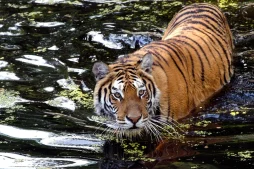
Here is a list of some of the best national parks for tiger spotting in India.
Bandhavgarh National Park, Madhya Pradesh
Located in Central India, Bandhavgarh National Park is named after the highest mountain in the park, also home to the majestic Bandhavgarh Fort. The national park is nestled in a dense tropical forest and steep hills, with a population of 70 to 75 Bengal tigers residing at the moment! Apart from tigers, the park also has a variety of beautiful flora and fauna.
Getting there:
Nearest airport: Jabalpur Airport (190 km)
Nearest railway station: Jabalpur or Katni (100 km)
Best time to visit: October to March.
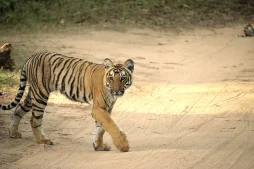 Bandhavgarh National Park
Bandhavgarh National Park
Pench National Park, Madhya Pradesh/Maharashtra
Covering an area of 760 square kilometers, Pench National Park is considered to be the inspiration for Rudyard Kipling’s ‘The Jungle Book’. It is also the filming location for the BBC series “Spy in the Jungle”, one of the most sophisticated documentaries on tigers in the wild. Currently, the park houses 54 Bengal tigers, along with a large number of other animals, like the sambar deer.
Getting there:
Nearest airport: Nagpur Airport (110 km)
Nearest railway station: Nagpur Station (110 km)
Best time to visit: February to June
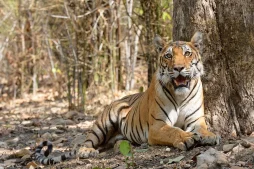 Pench National Park
Pench National Park
Tadoba-Andhari Tiger Reserve, Maharashtra
The largest national park in Maharashtra, Tadoba-Andhari Tiger Reserve has one big advantage – it is open the entire year. Along with a growing tiger population of 92 tigers at the moment, the park is home to leopards, sloth bears, gaurs, and other mammals. The two lakes and waterholes attract a large number of animals. The park also has marsh crocodiles in Tadoba Lake, once found in large numbers in Maharashtra.
Getting there:
Nearest airport: Nagpur airport (138 km)
Nearest railway station: Chandrapur (45 km)
Best time to visit: October to March. You are more likely to spot tigers from March to May, but it gets extremely hot from mid-March.
See also: A safari trip to Tadoba National Park
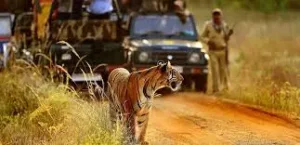 Tadoba-Andhari National Park
Tadoba-Andhari National Park
Ranthambore National Park, Rajasthan
Ranthambore National Park is a great option for tourists traveling from Delhi and Agra to Rajasthan while covering the Golden Triangle in India. Declared a national park in 1980, the park is situated on a plateau, where the Ranthambore Fort is also located. The vegetation here is relatively open, making it a good place to spot tigers. The park was home to Machali, the world’s most photographed tigress, who sadly passed away in 2016. She was responsible for considerably growing the tiger population in India. As of 2023, 88 Bengal tigers have been recorded in this park.
Getting there:
Nearest airport: Jaipur airport (167 km)
Nearest railway station: Savai Madhopur station (11 km)
Best time to visit: November to March. Tiger spotting is easier from March to May, but the summers are extremely hot in Rajasthan
Read more: What to expect at Ranthambore National Park
 Machali, the most photographed tigress in the world
Machali, the most photographed tigress in the world
Kanha National Park, Madhya Pradesh
Spread over 940 square kilometers, Kanha National Park is one of the largest national parks in India. The park is a mix of dense forest and open savanna vegetation with relatively open grasslands, making the chances of spotting tigers in the wild considerably high. Kanha was once home to the famous tiger Munna, who had the word “CAT” naturally marked on his forehead. Along with tigers, the park is also known for its large population of gaur (wild cattle).
Getting there:
Nearest airport: Jabalpur (130 km)
Nearest railway station: Gondia (145 km)
Best time to visit: November to March
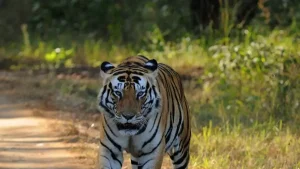 Munna at Kanha National Park (Picture credits: Frontline-The Hindu)
Munna at Kanha National Park (Picture credits: Frontline-The Hindu)
India also has many other national parks that are known for more than just tiger sightings. More about that here.
Even though the chances of seeing tigers in India are good due to the increasing population, getting to the national parks can be quite challenging. Additionally, there are many different accommodations, each with its own pros and cons. India Someday can assist with planning and booking safaris in advance. Just get in touch with us, and we’ll take care of everything. This way, your dream of experiencing a Bengal tiger in India can become a reality!
Frequently Asked Questions
Bandhavgarh Tiger Reserve in Madhya Pradesh has one of the highest densities of tigers in the world, increasing your chances of spotting a tiger.
Jim Corbett Tiger Reserve in Uttarakhand has the highest number of tigers in India, with 252 tigers living inside the reserve and 262 using it.
February to June is the best time to spot tigers in India. Since it is the dry and hot season, tigers venture out near the waterholes for water, making tiger-spotting almost guaranteed.
The Bor Tiger Reserve in Wardha district in Maharashtra is the smallest tiger reserve in India.
helping you travel your way
Everything you need to know about India is here We have tried writing about everything you may need help with for your trip to India, If you need help in planning a trip to India Get in touch with us to to plan your trip of a life time.



